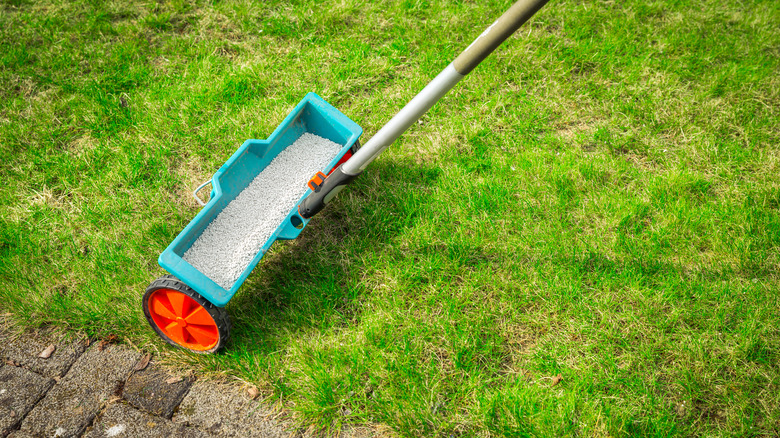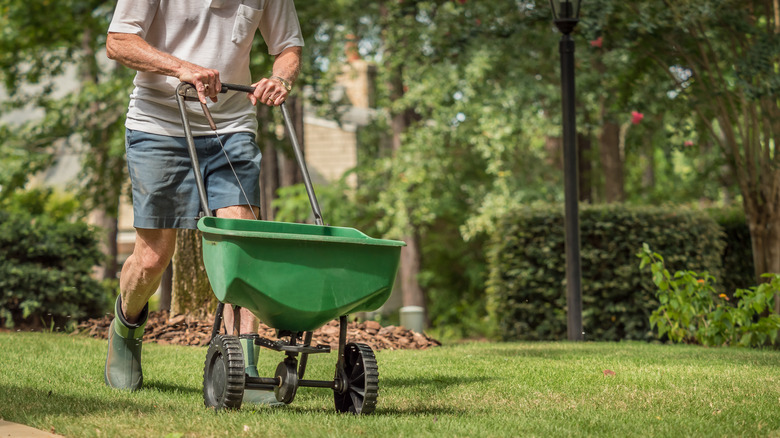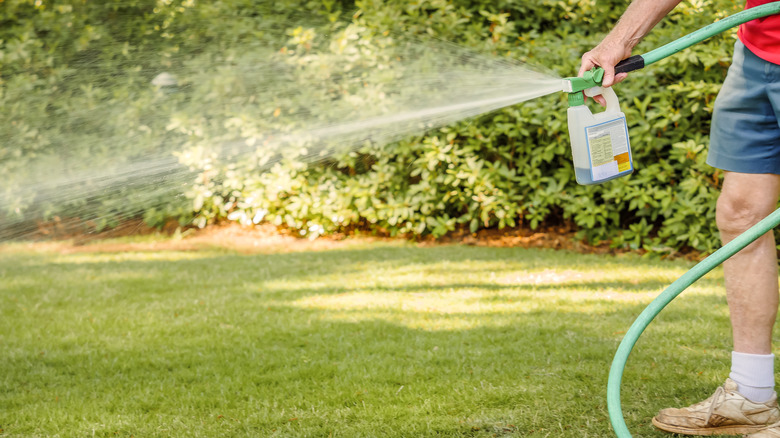Fast- Vs. Slow-Release Fertilizer: Which Is Best For A Healthy Lawn?
Keeping a lawn healthy, lush and green can be difficult sometimes, but there are a number of products that can help. Fertilizer is an option for keeping lawns vibrant, but it's important to know which fertilizer to use, when to use it, and how to use it. There are two kinds of fertilizer to consider for your lawn: slow-release and fast-release. These fertilizers are designed to give nutrition to your lawn that's lacking in your soil, which helps grass to grow throughout the season.
Fast-release fertilizers (sometimes called quick-release fertilizers) release a higher concentration of nutrients than slow-release formulas, and this lasts from two to four weeks. This type of fertilizer will cause a faster burst of green color in your lawn. Slow-release fertilizers, meanwhile, release a slow stream of nutrients over a period of six to eight weeks, and give slower "green" results, but provide a steady supply of feeding that promote long-term health.
In most cases, you'll probably want to use a slow-release fertilizer. One reason for this is that fast-release fertilizers are intended for quick results, but they tend to scorch grass if too much is applied. But there are certain times when fast-release fertilizers are called for. This article will discuss the use of both types of fertilizer and help you decide what's best for your lawn at the right time.
Feeding your lawn with slow-release fertilizer
If your lawn is already established, slow-release fertilizers are a great way to feed your grass during the growing season. Slow-release fertilizers help produce uniform growth and also promote strong roots, which can protect your lawn from invasive pests or diseases. These products often come in granular form, which is generally easier to apply than liquid fertilizer. They're also available in organic formulas.
You can use a spreader tool designed for this job: These come in a number of different shapes and sizes. The most basic design for a spreader is a small push cart that drops fertilizer granules as you walk across your lawn, and gives good even coverage. You can also do it by hand, with a shaker or other container, or toss it while wearing gloves. You'll want to pay attention to where you're throwing fertilizer to make sure you cover the whole area.
These products work best in late spring after the soil has warmed up to at least 50 degrees Fahrenheit, which allows the soil to access and utilize the ingredients more effectively. Granular fertilizers also work better if there's occasional water available, but too much heavy rain can dilute their effectiveness or even cause the grains to wash away before they finish dissolving. The best time to fertilize is two to three days before a light to medium rainfall, so keep an eye on the weather forecast.
When you should use fast-release fertilizer
There are differing viewpoints on the best timing for using fast-release fertilizers. Some experts recommend using them in summer to help grass get an extra boost of growth during hot weather. But for the most part, spring and fall are considered the safest times to use them, and you should switch to slow-release fertilizers for summer to help deliver nutrients on a consistent basis.
Fast-release fertilizer can be used in the spring for a quick boost of nutrients to newly planted grass seed. Fertilizing after planting will get your grass off to a good healthy start by providing plenty of nitrogen. It also promotes fast growth, which will help push out undesirable weeds.
In the fall, you should consider using a fast-release fertilizer for your lawn if it contains turf grasses. Turf grasses refer to types of grass often planted for residential, commercial, and recreational use, to create a thick pad of grass that's mowed and maintained.
Some turf grasses do best in warm climates, while others grow better in cold or temperate climates, and are known as "cool season turf grasses," including Kentucky bluegrass, and perennial ryegrass. Many grass seed mixtures contain a mix of turf grasses. These grasses benefit from fast-release fertilizer in the fall because it allows them to absorb nutrients quickly before they begin to go into their winter dormant period.


